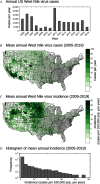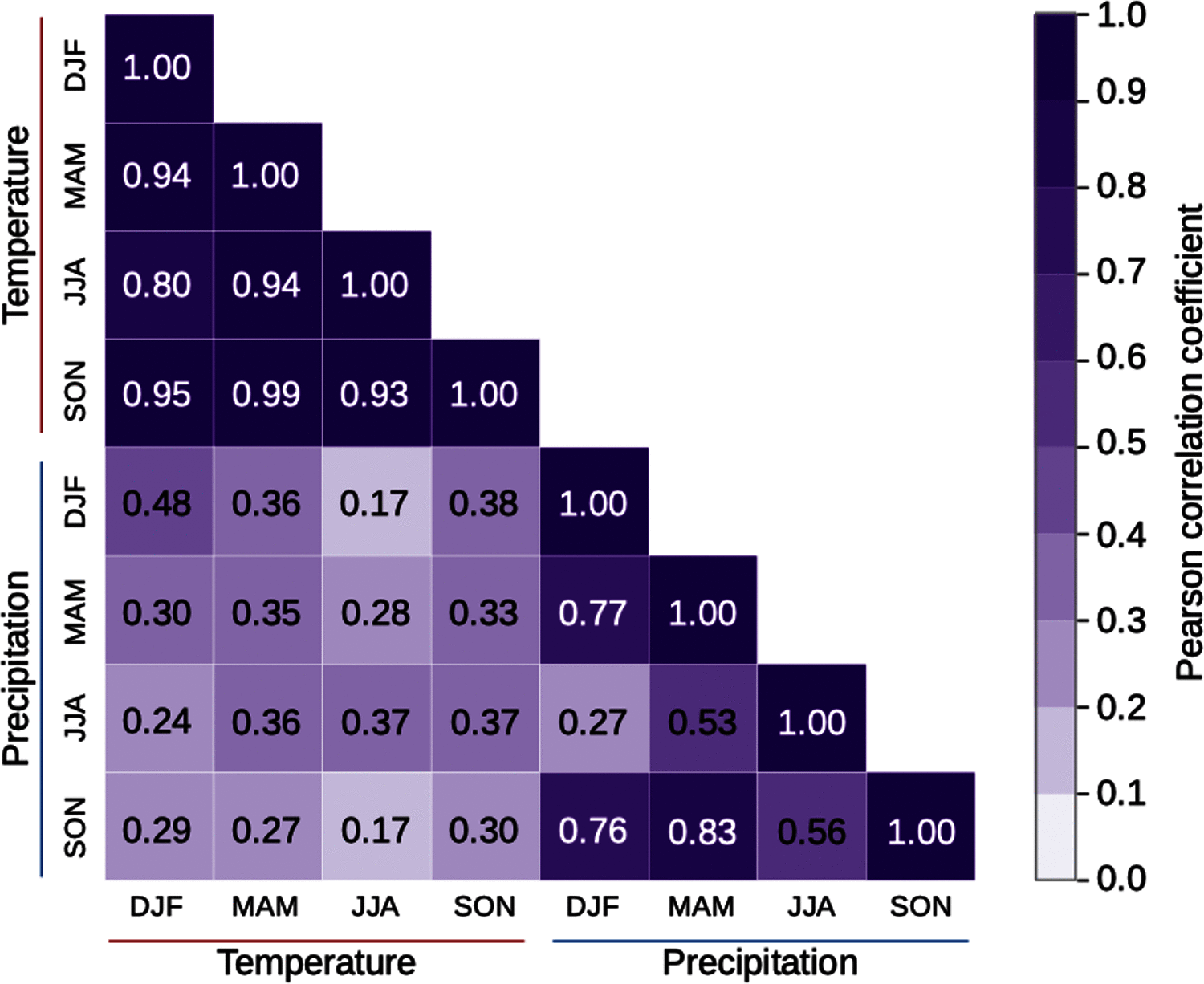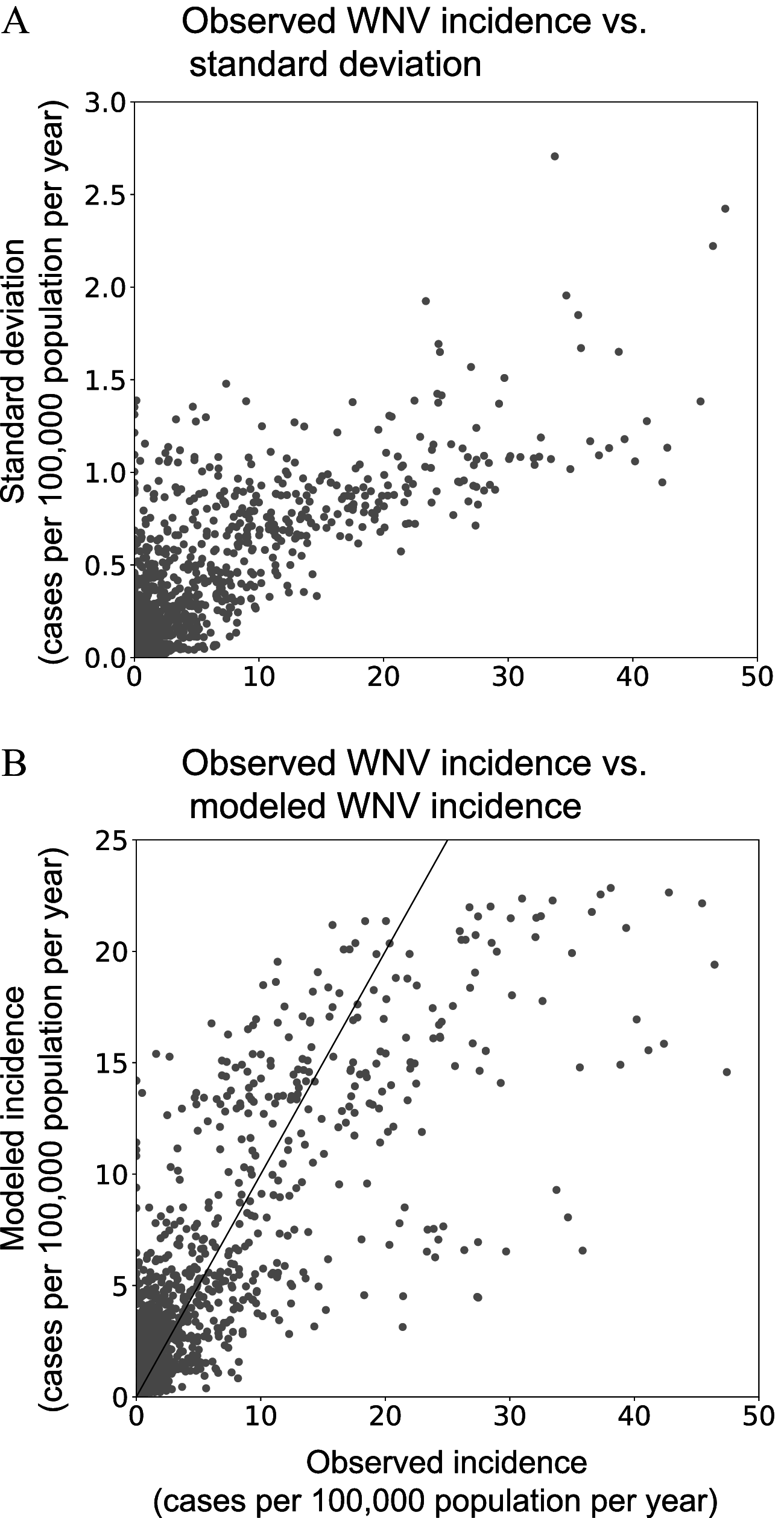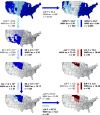Assessing the Influence of Climate on the Spatial Pattern of West Nile Virus Incidence in the United States
- PMID: 37104243
- PMCID: PMC10137712
- DOI: 10.1289/EHP10986
Assessing the Influence of Climate on the Spatial Pattern of West Nile Virus Incidence in the United States
Abstract
Background: West Nile virus (WNV) is the leading cause of mosquito-borne disease in humans in the United States. Since the introduction of the disease in 1999, incidence levels have stabilized in many regions, allowing for analysis of climate conditions that shape the spatial structure of disease incidence.
Objectives: Our goal was to identify the seasonal climate variables that influence the spatial extent and magnitude of WNV incidence in humans.
Methods: We developed a predictive model of contemporary mean annual WNV incidence using U.S. county-level case reports from 2005 to 2019 and seasonally averaged climate variables. We used a random forest model that had an out-of-sample model performance of .
Results: Our model accurately captured the V-shaped area of higher WNV incidence that extends from states on the Canadian border south through the middle of the Great Plains. It also captured a region of moderate WNV incidence in the southern Mississippi Valley. The highest levels of WNV incidence were in regions with dry and cold winters and wet and mild summers. The random forest model classified counties with average winter precipitation levels as having incidence levels over 11 times greater than those of counties that are wetter. Among the climate predictors, winter precipitation, fall precipitation, and winter temperature were the three most important predictive variables.
Discussion: We consider which aspects of the WNV transmission cycle climate conditions may benefit the most and argued that dry and cold winters are climate conditions optimal for the mosquito species key to amplifying WNV transmission. Our statistical model may be useful in projecting shifts in WNV risk in response to climate change. https://doi.org/10.1289/EHP10986.
Figures







Comment in
-
Invited Perspective: The Importance of Models in Preparing for West Nile Virus Outbreaks.Environ Health Perspect. 2023 Apr;131(4):41304. doi: 10.1289/EHP12446. Epub 2023 Apr 27. Environ Health Perspect. 2023. PMID: 37104242 Free PMC article. No abstract available.
References
-
- U.S. CDC (U.S. Centers for Disease Control and Prevention). 2022. West Nile Virus. https://www.cdc.gov/westnile/index.html [accessed 15 January 2022].
-
- U.S. CDC. 2018. West Nile Virus, Symptoms, Diagnosis, & Treatment. https://www.cdc.gov/westnile/symptoms/index.html [accessed 15 January 2022].
-
- U.S. CDC. 2021. Final Cumulative Maps & Data for 1999–2021. https://www.cdc.gov/westnile/statsmaps/cumMapsData.html [accessed 15 January 2022].

